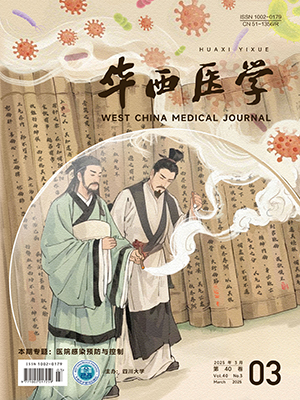| 1. |
Zhao N, Zhang J, Zhao Q, et al. Mechanisms of long non-coding RNAs in biological characteristics and aerobic glycolysis of glioma. Int J Mol Sci, 2021, 22(20): 11197.
|
| 2. |
Boyd NH, Tran AN, Bernstock JD, et al. Glioma stem cells and their roles within the hypoxic tumor microenvironment. Theranostics, 2021, 11(2): 665-683.
|
| 3. |
Huang H, Yu X, Han X, et al. Piwil1 regulates glioma stem cell maintenance and glioblastoma progression. Cell Rep, 2021, 34(1): 108522.
|
| 4. |
Kapoor-Narula U, Lenka N. Elucidating the anti-tumorigenic efficacy of oltipraz, a dithiolethione, in glioblastoma. Cells, 2022, 11(19): 3057.
|
| 5. |
Choi HS, Kim SL, Kim JH, et al. Plant volatile, phenylacetaldehyde targets breast cancer stem cell by induction of ros and regulation of stat3 signal. Antioxidants (Basel), 2020, 9(11): 1119.
|
| 6. |
Du L, Wang L, Gan J, et al. MTA3 represses cancer stemness by targeting the SOX2OT/SOX2 axis. iScience, 2019, 22: 353-368.
|
| 7. |
Horii M, Moretto-Zita M, Nelson KK, et al. MTA3 regulates differentiation of human cytotrophoblast stem cells. Placenta, 2015, 36(9): 974-980.
|
| 8. |
Fujita N, Jaye DL, Kajita M, et al. MTA3, a Mi-2/NuRD complex subunit, regulates an invasive growth pathway in breast cancer. Cell, 2003, 113(2): 207-219.
|
| 9. |
Jiao T, Li Y, Gao T, et al. MTA3 regulates malignant progression of colorectal cancer through Wnt signaling pathway. Tumour Biol, 2017, 39(3): 1010428317695027.
|
| 10. |
Lau P, Zhang G, Zhao S, et al. Sphingosine kinase 1 promotes tumor immune evasion by regulating the MTA3-PD-L1 axis. Cell Mol Immunol, 2022, 19(10): 1153-1167.
|
| 11. |
Liu J, Wang X, Chen AT, et al. ZNF117 regulates glioblastoma stem cell differentiation towards oligodendroglial lineage. Nat Commun, 2022, 13(1): 2196.
|
| 12. |
Li Q, Li Z, Lin Y, et al. High glucose promotes hepatic fibrosis via miR-32/MTA3-mediated epithelial-to-mesenchymal transition. Mol Med Rep, 2019, 19(4): 3190-3200.
|
| 13. |
李海英, 王庆苓, 张琳, 等. MTA3 在肺癌细胞中调控细胞凋亡机制的研究. 中国肺癌杂志, 2015, 18(10): 610-615.
|
| 14. |
Wang Y, Qi H, Liu Y, et al. The double-edged roles of ROS in cancer prevention and therapy. Theranostics, 2021, 11(10): 4839-4857.
|
| 15. |
Fukai T, Ushio-Fukai M. Cross-talk between NADPH oxidase and mitochondria: role in ROS signaling and angiogenesis. Cells, 2020, 9(8): 1849.
|
| 16. |
Najafi M, Mortezaee K, Majidpoor J. Cancer stem cell (CSC) resistance drivers. Life Sci, 2019, 234: 116781.
|




